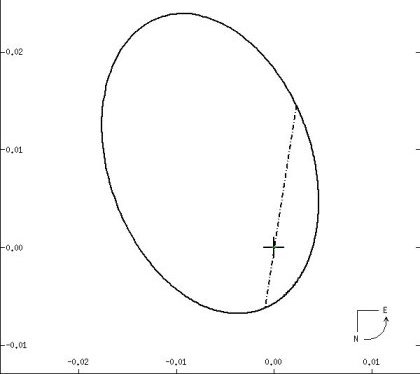
 |
The companion to Theta-2 Tauri elliptically orbits its brighter mate (at the cross) every 140.7 days at a mean distance of 0.86 Astronomical Units. In reality, each orbits the other around a common center of mass. The orbit is tilted to the line of sight so that the major axis of the ellipse (the dashed line) appears off to the side and the focus of the true ellipse (at the cross) is offset as well. The scale on the axes is in hundredths of a second of arc. From the Sixth Catalog of Orbits of Visual Binary Stars , W. I. Hartkopf and B. D. Mason, US Naval Observatory Double Star Catalog, 2006. |